Smoking a whole brisket for the first time can be quite intimidating, I know it was for me. After smoking literally hundreds of briskets in my backyard, restaurants and on the bbq competition circuit I have learned all the tips and tricks you will need to make outstanding brisket on your very first try.
On top of cooking tips we will discuss seasoning, slicing, choosing the right brisket and the age old question to wrap or not to wrap?
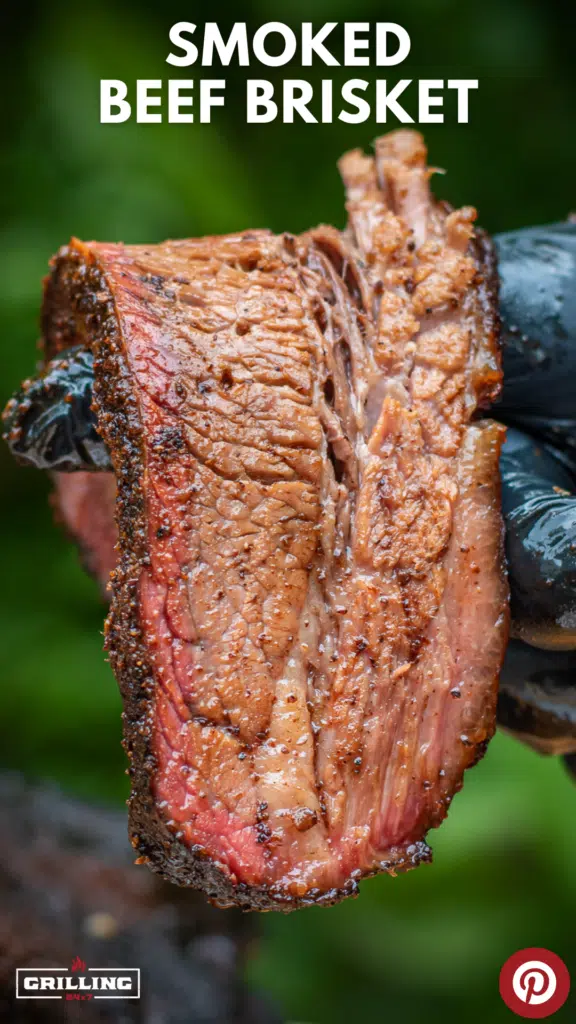
Looking for more Smoked Beef Recipes Checkout: Texas Style Beef Ribs, Pulled Smoked Chuck Roast, and Smoked Corned Beef!
Learn how to make Brisket on Pellet Grill!
In this recipe, I will share with you about 20 years of secrets. Here you will find all my tips and tricks for making the perfect smoked brisket on any pellet grill every time, guaranteed.
Whether you are looking to cook your first brisket or your 500th brisket on the pellet grill, this post is full of helpful tips and tricks to show you the best way to achieve tender, juicy smoked brisket every time!
We will review all the big questions about smoked brisket, from fat side up or down to trimming a brisket to whether you should wrap it with foil or butcher paper.
I'll give you my top do's and dont's so the next time you smoke a brisket, you will have confidence knowing you're on the right track.
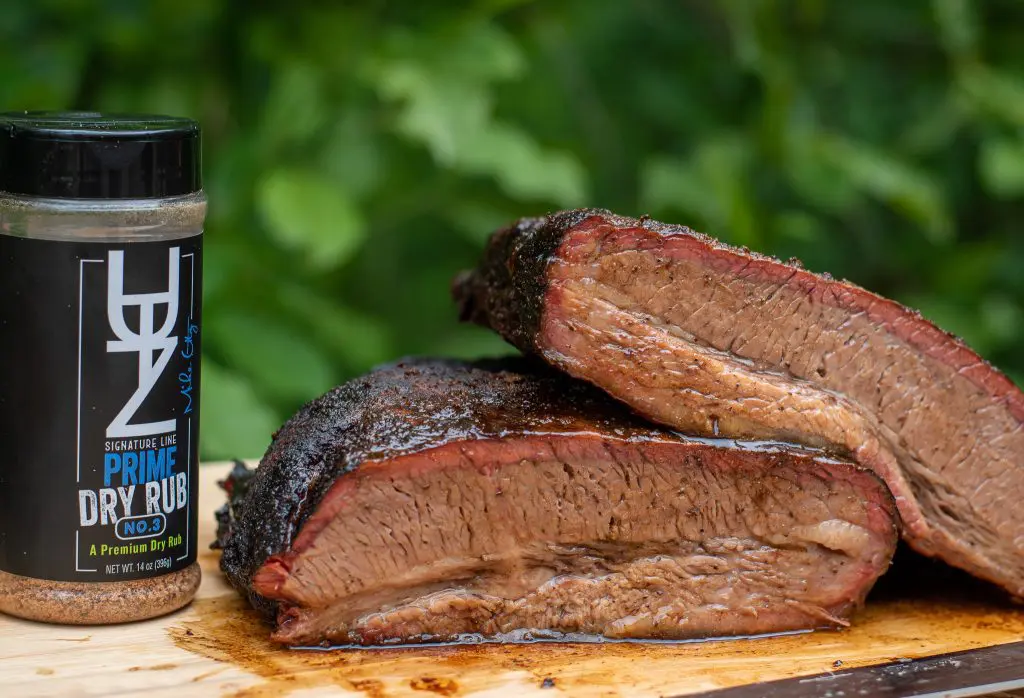
Pellet Grill Brisket Ingredients
Beef. 15 lbs of whole beef brisket. You can find this at your local butcher or at your local grocery store meat counter. Pro-Tip: I would recommend calling first to see if they have it in stock and if they can set it aside for you.
Seasoning. To season this juicy brisket, you will need ⅓ cup of your favorite dry rub seasoning.
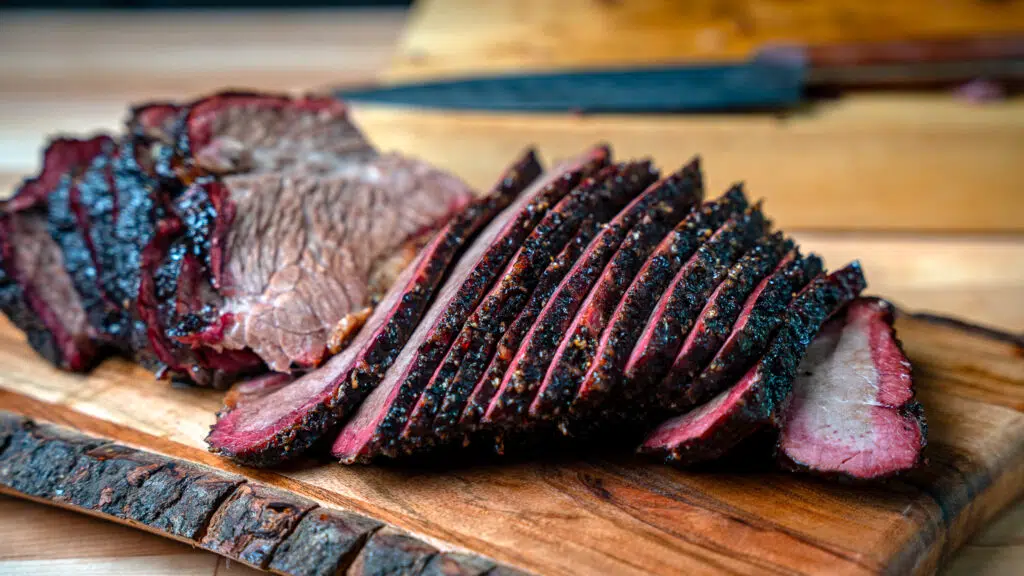
How to season Beef Brisket before Smoking
There are two schools of thought when it comes to seasoning brisket. Purists will say that you only season the brisket with kosher salt and black pepper.
You need to make sure to use coarse salt and never a fine-ground table salt. I use dood ole Diamond Krystal Kosher Salt and 16 mesh Coarse ground Black Pepper.
The second school of thought is to treat the brisket more like a pork shoulder and make a dry spice rub with a combination of different spices, herbs, and chiles along with salt and sugar.
I tend to lean towards the simpler salt and pepper rub but I do like to add a small amount of granulated onion and garlic.
By doing this, the seasoning will develop a nice peppery bark over the long cook.
Both are tasty methods for making a good brisket and I encourage you to give both a try and decide for yourself.
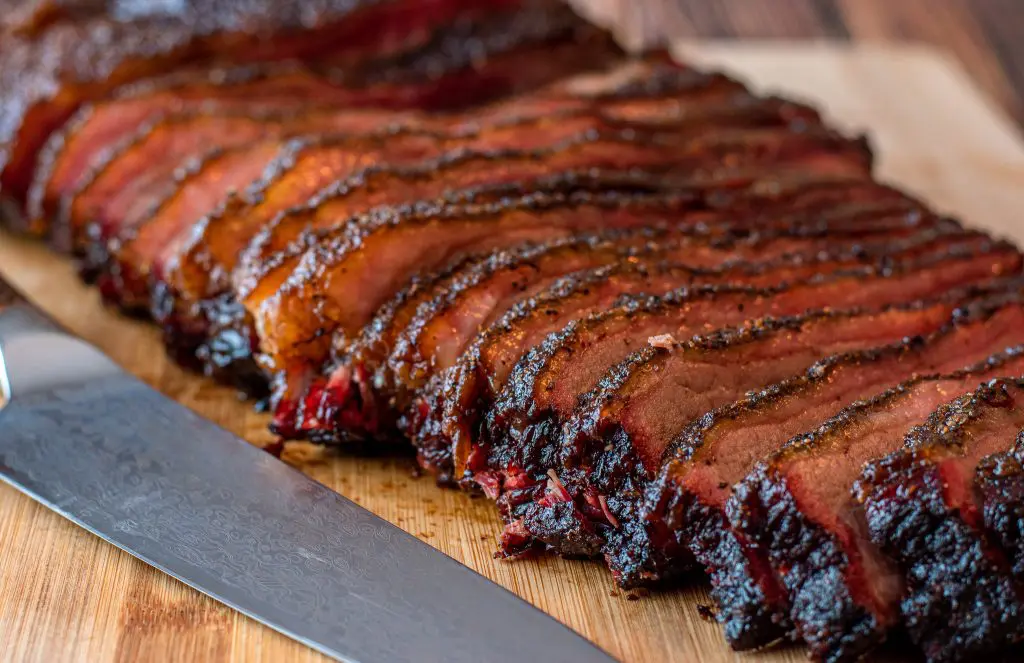
Homemade Texas Style Brisket Dry Rub
With pantry staple spices you can make my homemade Texas Style dry rub that is out of this world!
- ¼ cup kosher salt
- ¼ cup 16 mesh black pepper
- 2 tsp granulated onion
- 2 tsp granulated garlic
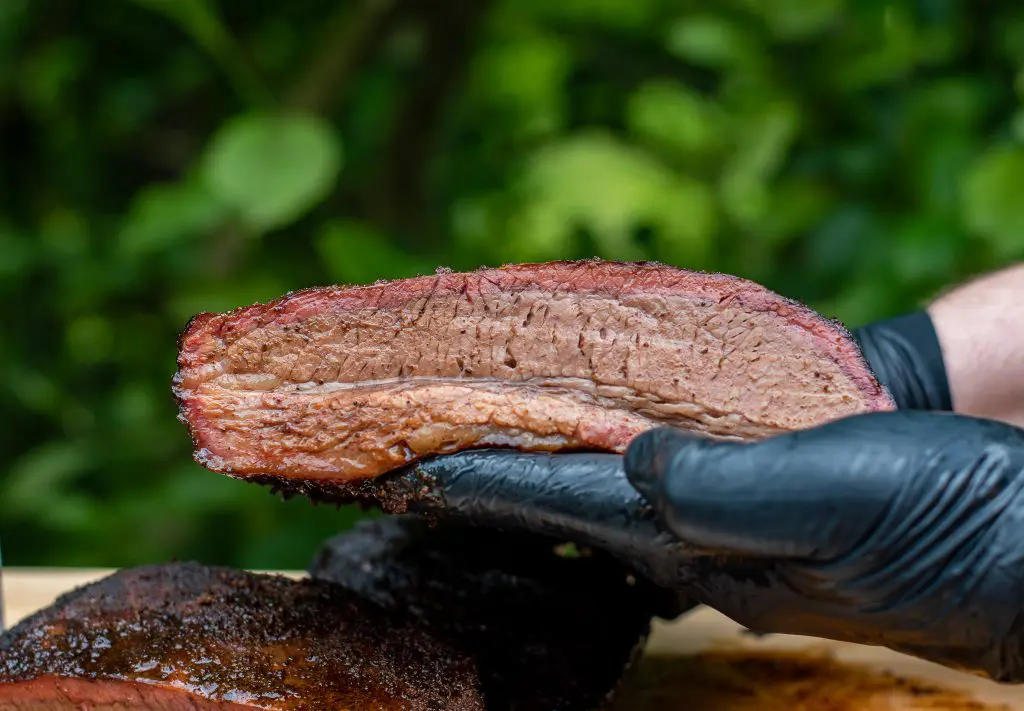
How to make Homemade Dry Rub
Looking to skip the store-bought dry rub and make something homemade?
Homemade dry rub for brisket is super-easy to make and can be made in a matter of minutes.
I recommend using ingredients like:
- paprika
- kosher salt
- garlic powder
- onion powder
- freshly ground black pepper
- dried parsley
- cayenne pepper
- ground cumin
- ground coriander
- dried oregano or Italian seasoning
- hot chili powder
- dark brown sugar
Pro-Tip: Depending on the flavor you are looking for, you may want to use more or less of some ingredients, and depending on the size and weight of your brisket, you may need to make more or less of the dry rub.
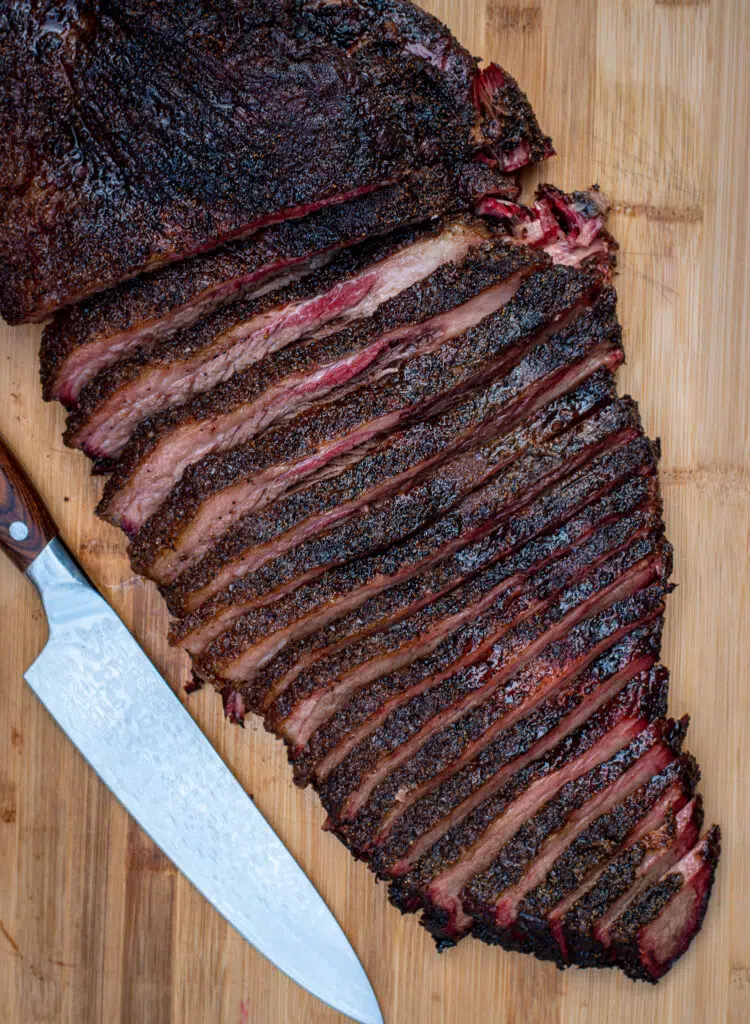
Homemade BBQ Brisket Dry Rub
Looking for something a little more conventional, try my homemade BBQ Brisket dry rub. This is a great recipe if you are looking for a flavor to please the masses.
- ¼ cup kosher salt
- ¼ cup smoked paprika
- 2 tbsp brown sugar
- 2 tbsp 16 mesh black pepper
- 1 tsp granulated onion
- 1 tsp granulated garlic
- ½ tsp ground cumin
- 2 tsp ancho Chile powder
- ½ tsp ground cayenne (optional)
If you are looking to go a different direction with your brisket and use a store-bought dry rub, there are plenty of options like Utz Works Prime, Blazin Star, and Smokin Guns.
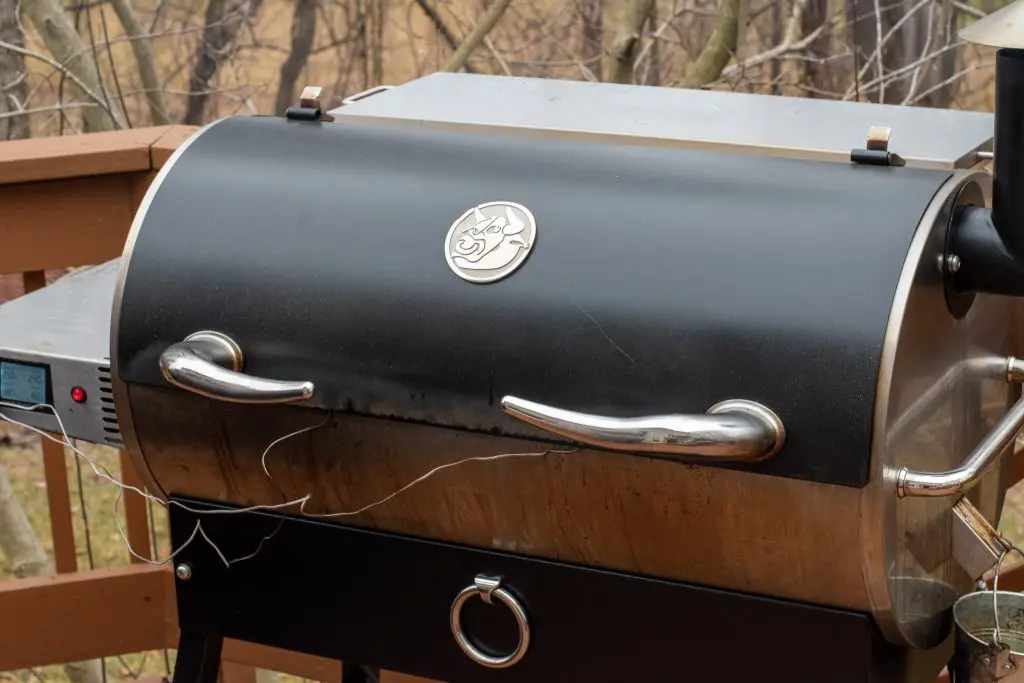
How to Smoke a Brisket on a Pellet Grill
- Preheat. Preheat the pellet grill to between 225 degrees F.
- Trim the fat. Trim Brisket removing any discolored or excess fat. Make sure to leave at least ¼ inch of fat on the top fat cap.
- Season the meat. Season aggressively with a dry rub of choice and place on the pit fat side down with the thickest part of the brisket nearest to the heat source.
- Smoke the meat. Smoke brisket for at least 4 hours before checking temperature and color. Once the brisket reaches an internal temperature above 160 degrees, F. check the bark. If you want to wrap it with butcher paper, now would be the time., if not, otherwise continue smoking.
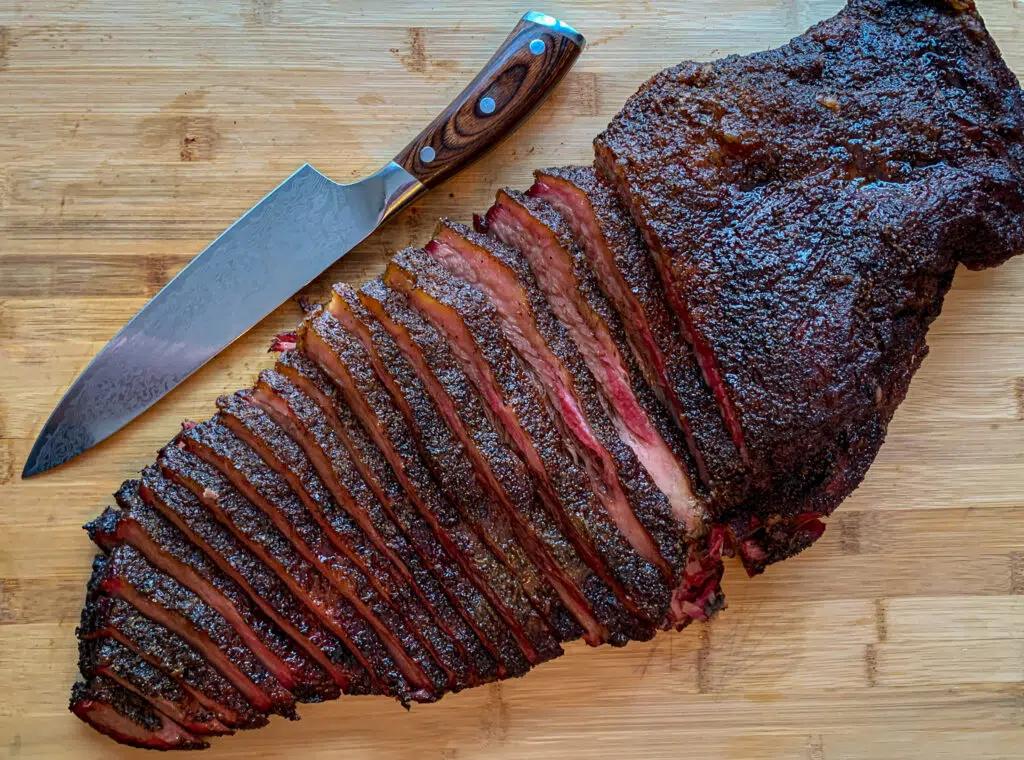
5 .Optional if you wrap the brisket. If you wrap the brisket, you can raise the temperature to as high as 275 to finish the cook. Once the brisket has reached an internal temperature of 200 degrees F, you will want to begin checking for tenderness.
6. Let rest. Once the brisket is done, let it rest wrapped in a towel in a cooler for at least 1 hour until the internal temp lowers to around 160 degrees f.
7. Slice up the meat. Slice the brisket against the grain, cutting slices about a ¼ inch thick. if brisket slices are crumbling, cut thicker; if brisket seems tough, make thinner cuts.
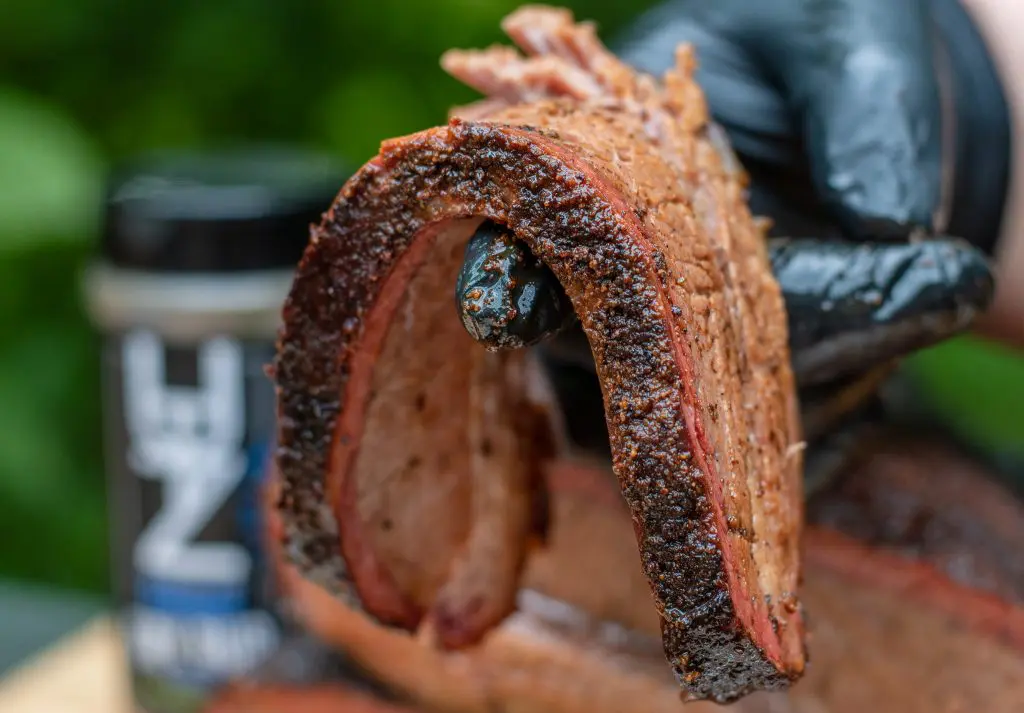
What temp is brisket most tender?
Every brisket is a little different so I don't recommend relying solely on temperature to tell when a brisket is done.
I like to keep a temperature probe thermometer in the flat section and the point so I can monitor the temp throughout the entire cook.
A high-end wagyu brisket can be tender and finished cooking at a lower temp than a choice brisket.
The brisket will be tender once the internal temperature reaches between 195 degrees F. all the way to 215 degrees F.
I normally begin to check the tenderness once my brisket hits 200 degrees unless I'm smoking wagyu. Gently probe the brisket in different spots on the point and flat.
You can probe the brisket with a wooden skewer or the probe on your thermometer.
The probe should go in with almost no tension. If it feels tight then continue the cooking process.
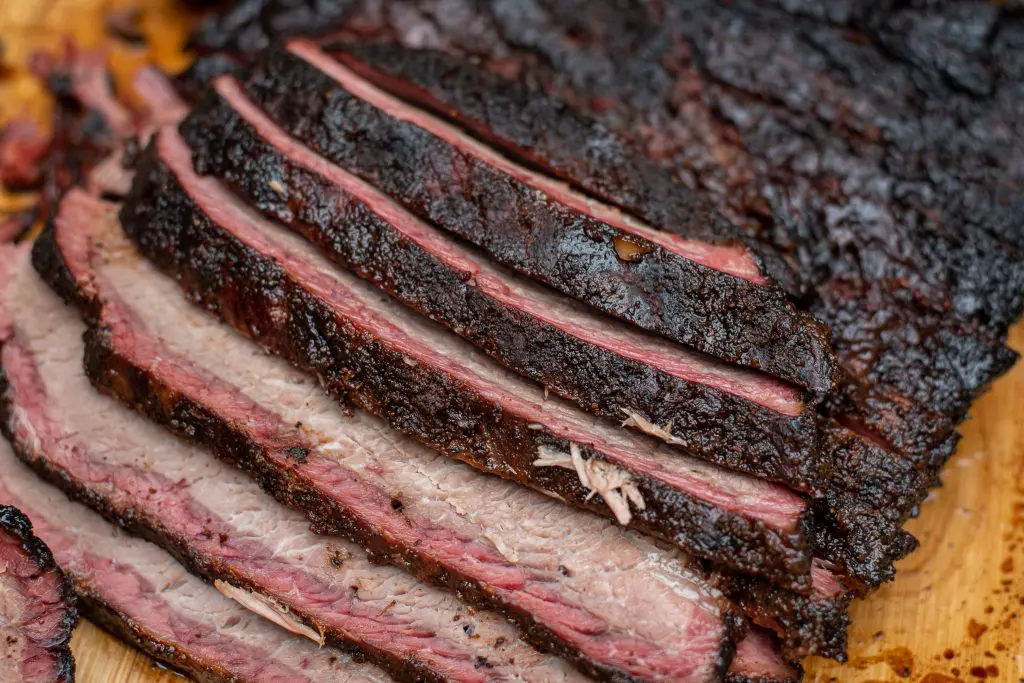
How long do you let a brisket rest before slicing?
Once the brisket is tender and fully cooked, it is essential to let the brisket rest before slicing. The meat is heated to 200 degrees, and when you slice the beef, the juices will rush out like hot butter.
If you let the brisket cool down to between 145-155 degrees, the juices will have time to reabsorb into the meat.
If you want to keep the brisket hot for a while before slicing, place the wrapped brisket in a dry cooler. I Wrap the brisket in a towel to further insulate the meat.
You can rest a brisket in a covered dry cooler easily for 4 hours and still have a hot juicy brisket when you serve it.
The type of cooler and size of the brisket will determine how long you can rest the brisket.
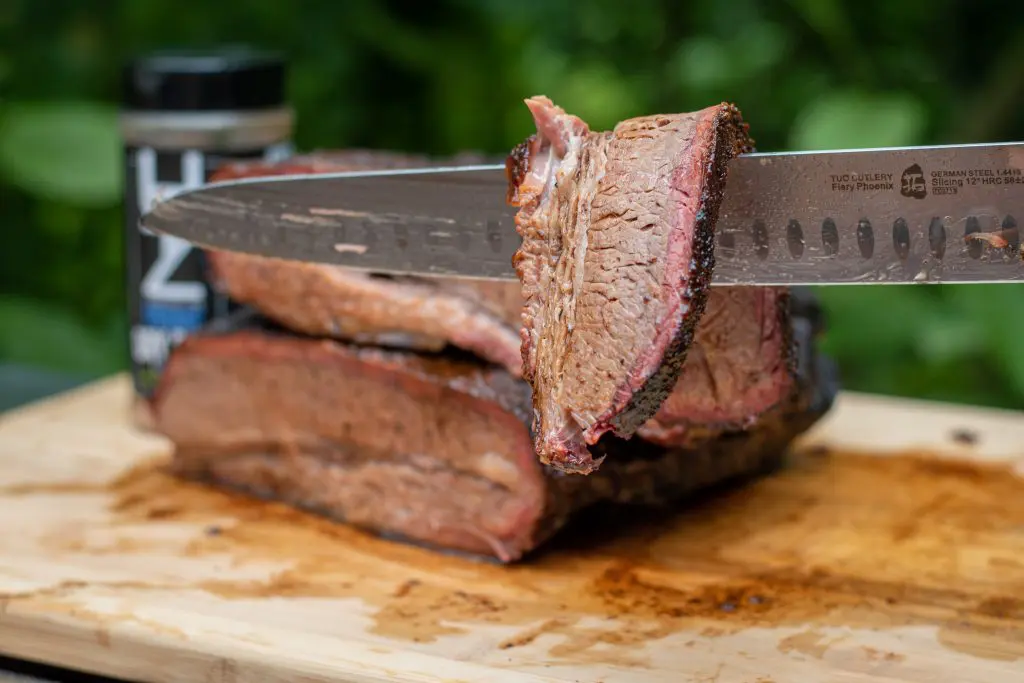
How to Slice after Smoking Brisket on Pellet Grill
When slicing the Brisket, you basically just want to make clean slices about the thickness of a pencil.
If the brisket is crumbling, that’s a sign that it’s a little overcooked.
In this case, you’ll want to make the slices a little thicker.
On the other hand, if you think that the brisket is chewy or not tender enough, you can always slice it thinner.
These small adjustments can disguise any imperfections in the cooking process.
The hang test is where you hang a slice of brisket over the top of your blade or even your finger. The slice should bend but not break as it hangs.
If that happens, you'll know you've got an amazing brisket on your hands.
The second is the pull test, where you take a slice and give it a gentle tug.
It should hold together for just a moment under tension before splitting into two pieces with a clean pull.
You can use a Slicer Knife, while others prefer using an Electric Carving Knife. I just use this 8″ Damascus Steel Chef Knife and it works like a champ.
As long as you have a good sharp knife, it doesn't have to be the highest quality; you'll be fine
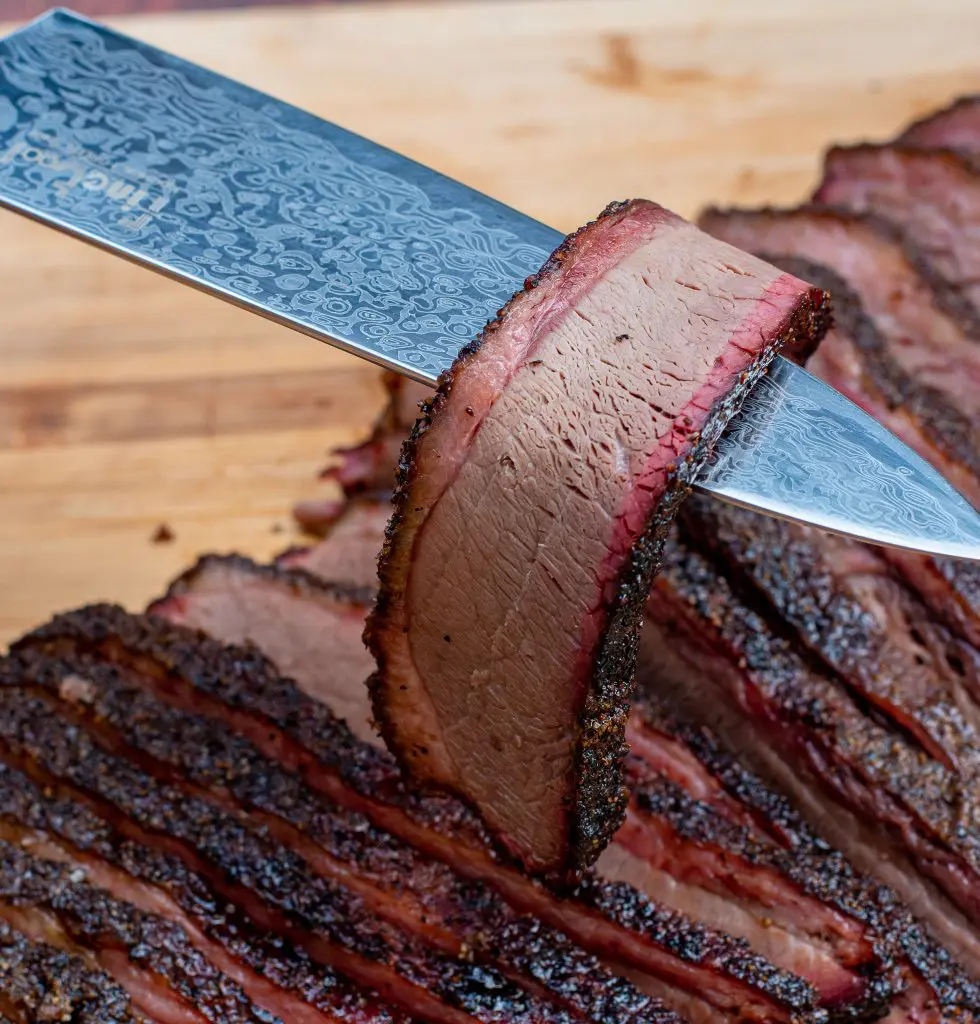
Tips for Smoking a Brisket on a Pellet Grill
Choosing the Right Brisket to Smoke
When you’re buying a brisket, you need to think about what your main goal is.
Are you competing in a KCBS competition for money and trophies, or are you cooking for friends and family? Do you prefer lean sliced brisket or rich, fatty burnt ends? How many people are you cooking for, and do you want leftovers?
These are the decisions that you need to make before you get to the grocery store. Now, when thinking and shopping, here are some terms and types of briskets to look for.
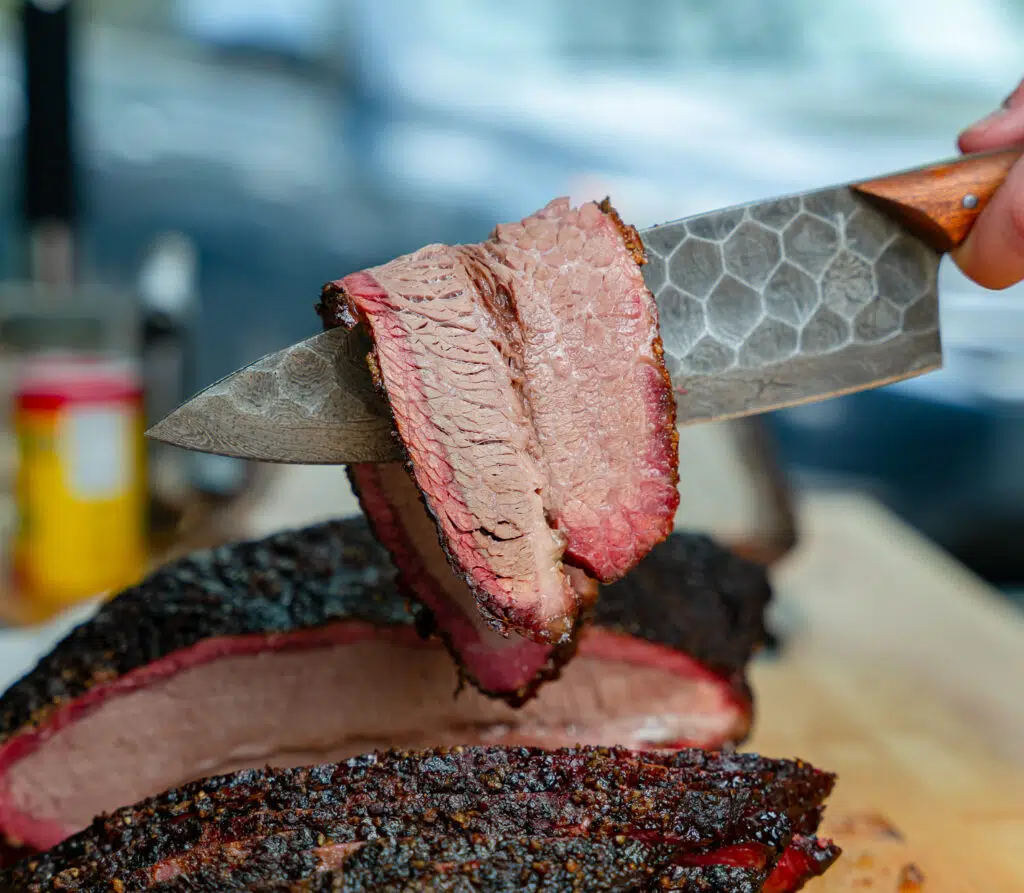
How to trim Brisket for Smoking on a Pellet Grill
Trimming a brisket for backyard cooking is fairly simple. You basically want to do some minor shaping and trim any large pieces of the excess fat off.
There really isn't much silver skin on brisket but you will need to trim off any gray or discolored meat.
Other than that I like to trim off some of the extra fat on the point to expose more of the meat so a crust will form.
I always trim raw brisket on a large plastic cutting board using a boning knife.
The plastic cutting board is easy to clean and will prevent cross-contamination. I’ll post a video below from the Best Brisket Whisperer himself Arron Franklin of Franklin Bbq in Austin Texas.
This video is worth its weight in gold and provides a lot of knowledge so pay attention.
When should I wrap my brisket?
The next controversial topic we will tackle is whether to wrap your brisket or not. Old school pitmasters swear that if you wrap, then you don't know how to cook a brisket properly.
Wrapping brisket in pink butcher paper is often referred to as the “ Texas Crutch."
You can definitely smoke a brisket without wrapping, and if the bark is your number one goal, I think unwrapped is the way to go.
I will warn you that you need to be vigilant that you don't burn any part of the brisket, or you will have a bitter taste permeate the entire brisket.
Keep the temp low and plan on it taking a few extra hours than if you wrap the brisket. I do have a happy medium solution ... Peach Butcher Paper.
Pellet Smoker Brisket Temperature Stalls
During the cook, you may notice that the brisket temperature suddenly stalls and may even go down a few degrees. This is often referred to as “ the Stall”.
If you're not in a rush, simply maintain your current temperature, and eventually, the brisket will push through and finish cooking.
You can help the brisket push through by wrapping the brisket in butcher paper.
I found a great article that explains in much further detail the reasons and theories behind the stall. (CLICK HERE)
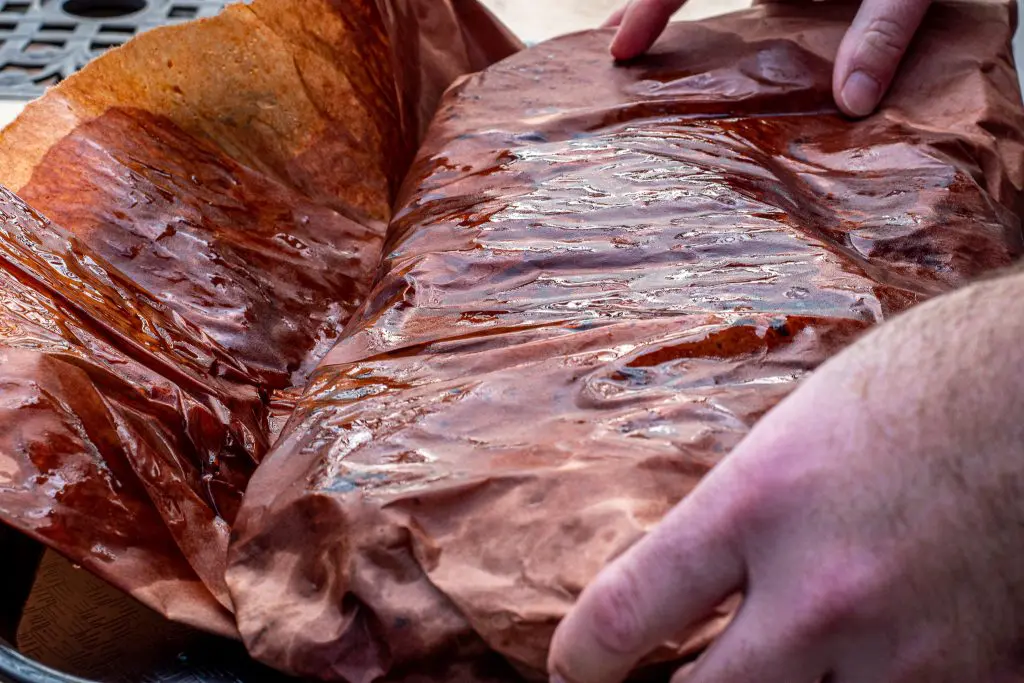
Should I wrap my brisket in foil?
I’m personally against wrapping in foil, but I do like to wrap the brisket in peach food-grade butcher paper. Butcher Paper allows the brisket to breathe while helping the brisket retain moisture and hold its color.
Foil tends to steam the brisket and softens the bark more than I like. Though I normally wrap my brisket based on the color and texture of the bark.
I would recommend checking the brisket around 160-170 degrees F. Wrap the brisket in the butcher paper tight similar to how you would roll up a giant burrito.
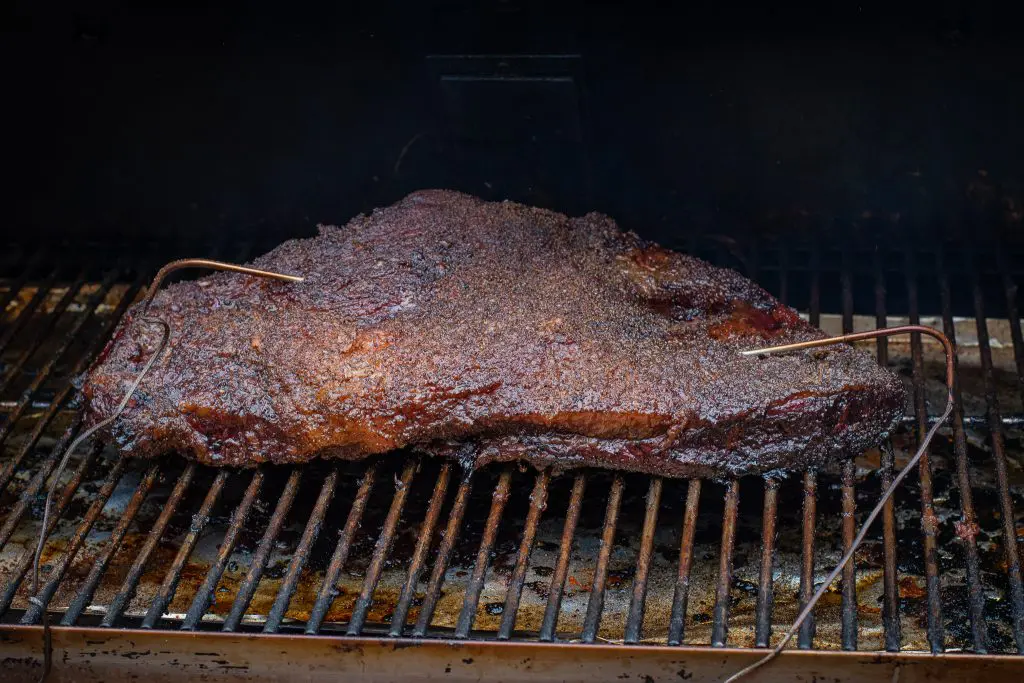
Types of Brisket
Drop Brisket: Completely untrimmed primal cut. Most likely only found from a butcher shop upon request.
Full Packer Brisket/ Whole Brisket: Both sections of the brisket are relatively untrimmed. The flat and point are attached with a fat cap. The size will vary from 10 pounds to over 20 pounds. Best for competitions and most versatile.
Brisket Flat: Trimmed Brisket with the point removed. Leaner and intended for slicing. Most commonly found cut of brisket.
Brisket Point: trimmed brisket section with the flat removed. A lot more fat and connective tissue. Can be sliced, shredded, or cubed to make burnt ends. Harder to find. May need to special order from the butcher.
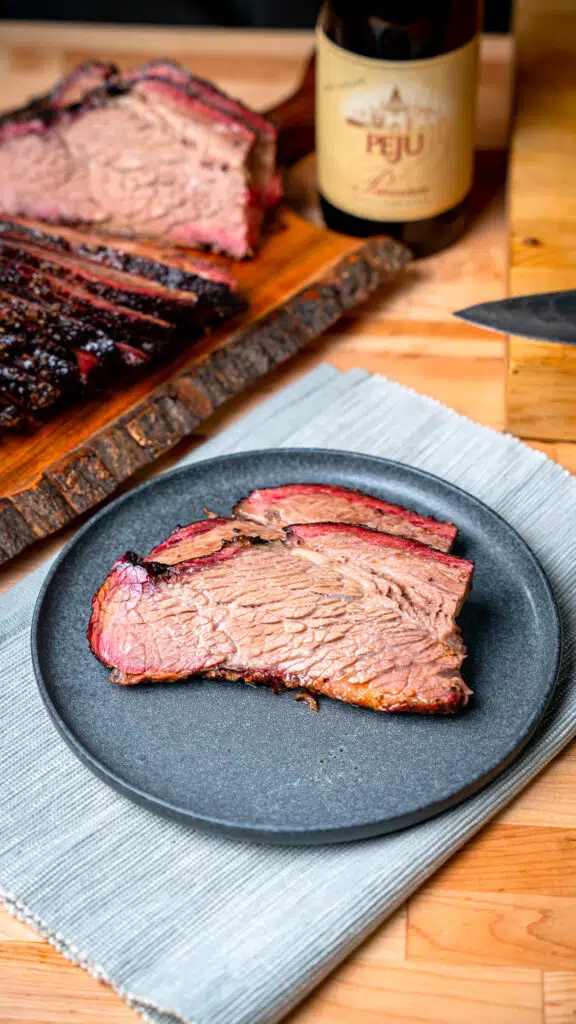
Once you’ve chosen which cut of brisket now, you need to decide what grade of beef. I recommend choosing between Choice, Prime, or Wagyu.
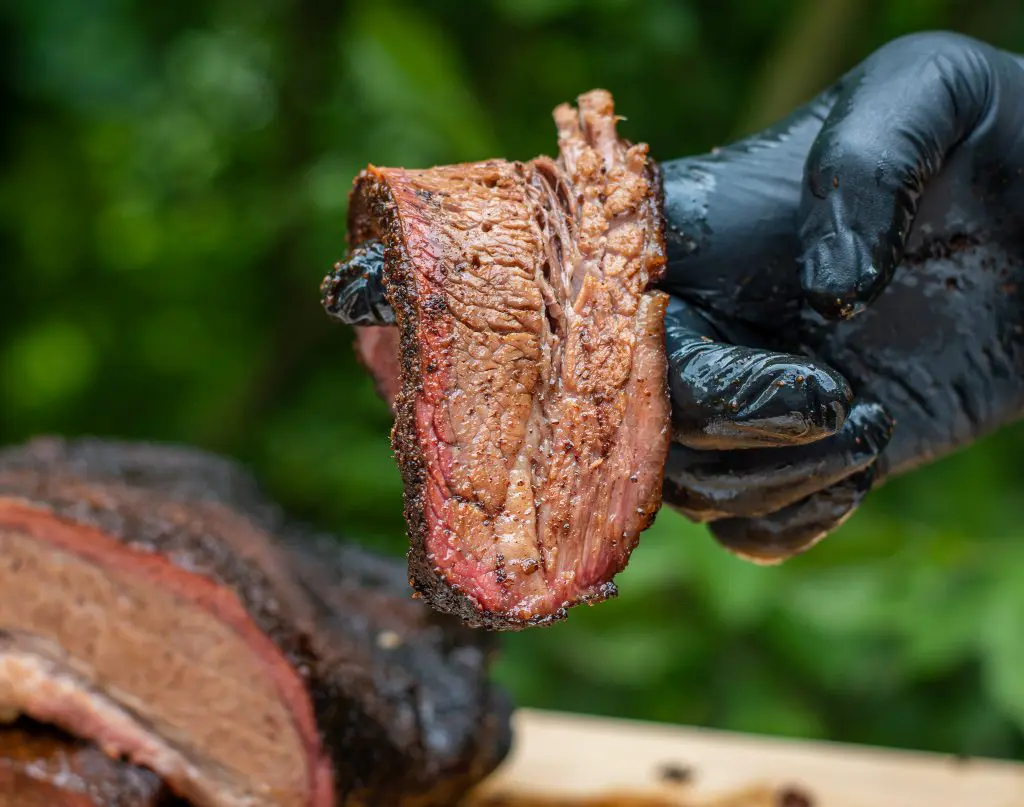
Choice beef is the most economical of the three but still a perfect quality cut, while Wagyu is much more expensive.
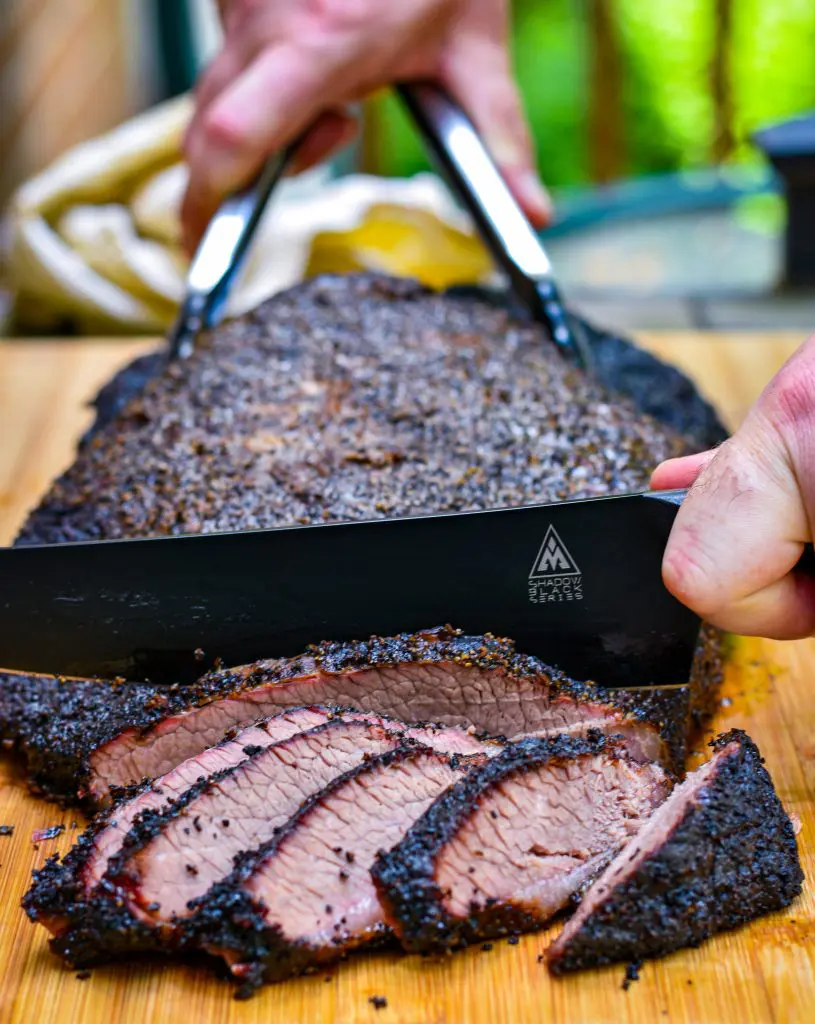
If you’re buying Wagyu make sure you’re feeding people you care about or attempting to win money.
Prime briskets are the happy medium in between because it has outstanding marbling and deep rich beef flavor.

Smoking Brisket on Pellet Grill FAQs
No, contrary to popular belief, I like to keep my brisket as cold as possible up till cook time. This allows for more smoke and better bark, in my opinion. Steaks and cuts of meat that are cooked to temp do benefit from room temp cooking but roasts and big cuts of meat are better off smoked straight out of the fridge.
Sure both are great for getting that smoky flavor but you'll need to rotate the brisket and keep a spray bottle nearby to monitor any flare-ups. I also recommend cooking the fat side of the brisket down so it can protect the meat from the flame
Purest will tell you that a good brisket dent needs sauce. I, however, feel that a balance of smoky flavor can be enhanced with a little hot sauce or barbecue sauce served on the side.
That's up to you, I personally use a can of cooking spray to hit any dry spots as the brisket smokes, but you can use a 50/50 blend of apple cider vinegar and water as well to add a little zip.
The perfect brisket is the one that has a great bark, a beautiful smoke ring, and tender, juicy meat. To achieve that, you need even temperature management. You can cook hot and fast or low and slow, but large temperature spikes spell out trouble when it comes to smoking the perfect brisket. Find a temperature range of about 25 degrees, give or take and try to stay in that range as much as possible.
I like to use a blend of hardwoods for smoking brisket like pecan, oak, and hickory.
I do know that some people swear by mesquite but I think it’s a bit strong for my taste and the pellets tend to burn a little hotter.
I don’t usually use fruit woods when smoking beef, but if that’s what you’ve got it’s definitely not a deal-breaker.
If you enjoy fruitwood pellets, I would recommend mixing them in with hickory to give you the best of both worlds and a nice smokey flavor.
I see this question asked all the time in numerous BBQ groups “ should I smoke my brisket fat side up or fat side down?
While some swear that brisket should be cooked fat side up so the juices will drip down into the meat, I'll argue that general physics says that that's not true.
The fact is that the fat cap is not magically melting back into the meat because as a brisket cooks, the meat contracts and pushes moisture out as the internal temperature rises.
I prefer to cook with the fat side down, especially on a pit that is heated from underneath.
The fat cap acts as a shield to protect the meat from overcooking. This allows the flat to develop a deep mahogany bark.
On an offset smoker, I always make sure the thicker point side is pointed towards the heat source to protect the thinner flat.
All this being said, I've had the delicious brisket-cooked both fat side up and down. It's more important to maintain a steady temperature and cook the brisket properly than what side the brisket is cooked on.
Whichever way you decide to cook the brisket, make sure that you place the brisket on the pit and form it into the shape you want it to hold.
If you stretch out the brisket, making it thinner, it will cook faster but lose moisture faster as well.
If you push the brisket together, giving it maximum thickness, the brisket will retain more moisture and develop a better bark.
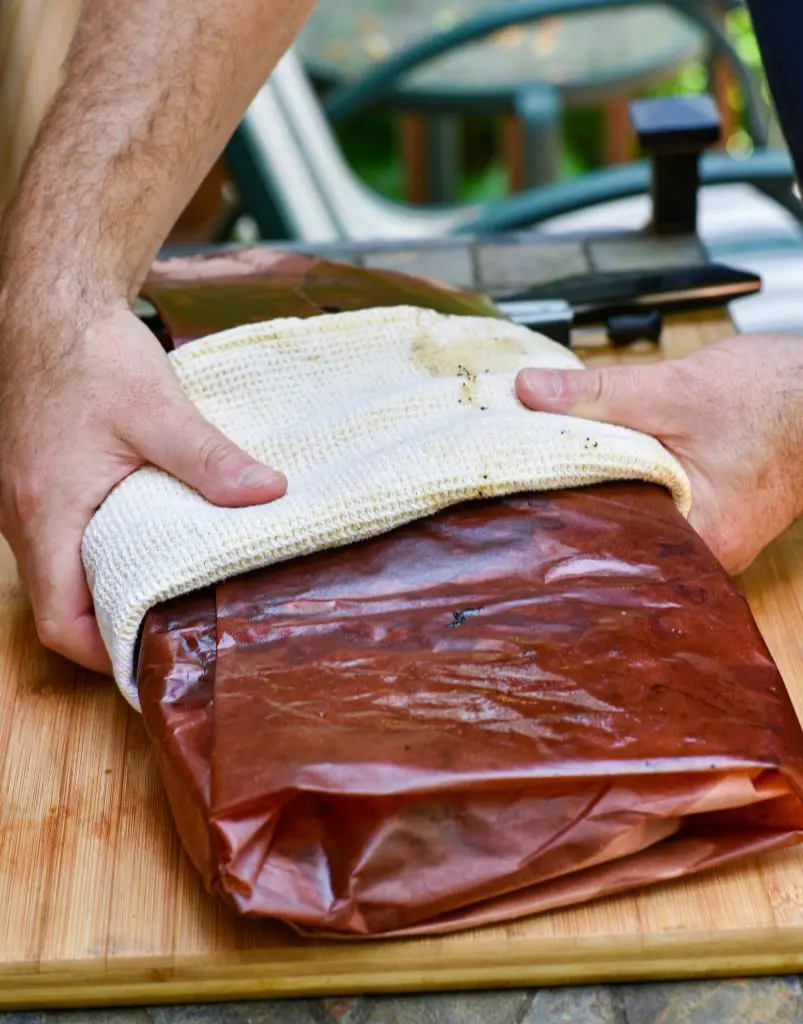
More like this Pellet Grill Brisket Recipe
- Smoked Corned Beef
- Smoked Beef Eye Round
- Texas Beef Ribs
- Beef Short Rib Sandwich w/ Pimento Cheese
- Texas Pellet Grill Brisket
- Smoked Chuck Roast
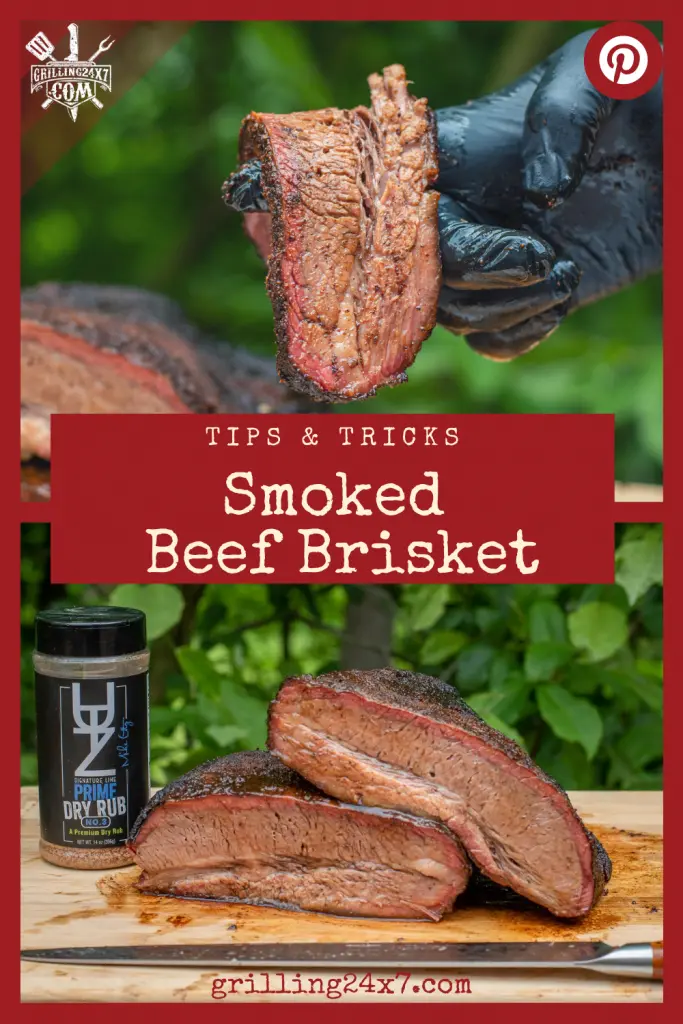
BEST Pellet Smoker Brisket Recipe
Equipment
- Smoker
Ingredients
- 15 lbs Whole Beef Brisket Raw
- ⅓ cup Dry Rub
Instructions
- Preheat pellet grill to between 225 degrees F.
- Trim Brisket removing any discolored or excess fat. Make sure to leave at least ¼ inch of fat on the top fat cap.
- Season agressivly with dry rub of choice. and place on the pit fat side down with the thickest part of the brisket nearest to the heat source.
- Smoke brisket for at least 4 hours before checking temperature and color. Once brisket reaches an internal temperature above 160 degrees F. check the bark. If you want to wrap with butcher paper now would be the time. otherwise continue smoking
- If you wrapped the brisket you can raise the temperature to as high as 275 to finish the the cook. Once the brisket has reached an internal tempeature of 200 degrees F you will want to begin checking for tenderness.
- Once brisket is done let it rest wrapped in a towel in a cooler for at least 1 hour until the internal temp lowers to around 160 degrees f.
- Slice the brisket against the grain cutting slices about a ¼ inch thick. if brisket slices are crumbling cut thicker, if brisket seems tough make thinner cuts.

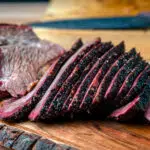
Comments
No Comments